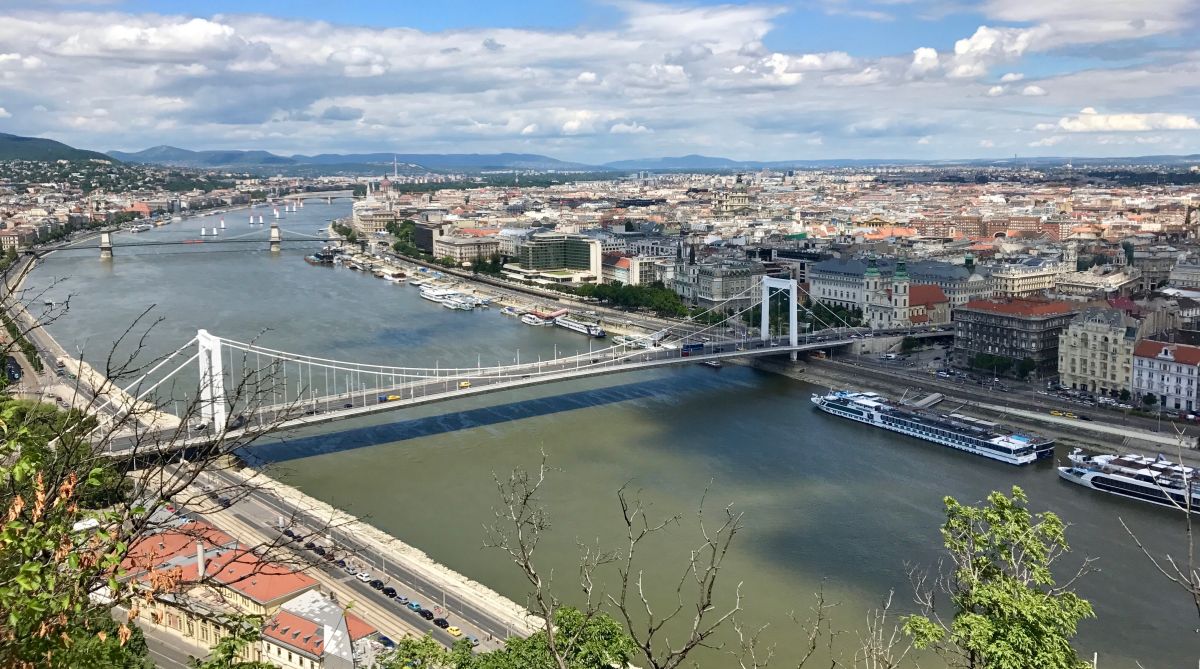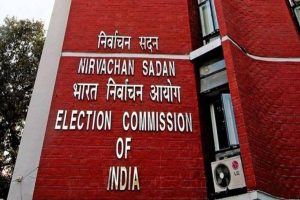It is June 2017 and my family – namely my two young kids, my husband, and I have just landed in Budapest. We have moved here from the Philippines, and hope to stay for a couple of years before the next destination beckons. We have been told that it will be hot in June. Spring has sprung and hopped away. Summer is spreading its warm embrace. We decide to ship across our winter wardrobe, and we land in the city clothed in jeans and T-shirts. The ‘summer’ breeze that slaps us in the face as we walk out of the airport is decidedly icy. ‘O Toto,’ I think, ‘we are certainly not in Kansas anymore.’
Budapest is my gateway to the rest of Europe. Though I’ve travelled extensively in Asia and Central America, Europe has always eluded me. Once, a Paris vacation slipped through my hands as my son’s passport did not come through in time. And once, a much-awaited trip had to be pushed away due to work. But here I am, at last in Europe. The Europe that seems familiar to me thanks to the scores and scores of Indian movies that have been shot on its cobbled streets and dappled hillsides. The Europe that seems so foreign to me because it is mostly grey. Imposing and grand, yes, but grey and restrained as opposed to India’s unrestrained, tropical verve.
Having secured our monthly passes, we start our explorations the very next day. The city’s ubiquitous trams are our chariots of choice. It trundles along, and a mechanical yet feminine voice announces the names of stations that our ears fail to connect with the names coming up on the overhead monitor. We give up trying to decipher Hungarian, one of the toughest languages to crack on the continent, and steer our senses outward. There it is, neatly slicing the city into Buda and Pest, the river Danube. It is not blue as one might imagine, but grey with waves pulsing up and down, as it rushes onward to fulfill its obligations towards all the other towns, cities and countries that straddle its banks. The Danube is a busy river and has many miles to go yet. Having crossed it, we land in Pest – what was once thought to be the point where Asia started. It is flat and noticeably warmer than hilly Buda on the other side. We get down at a stop in front of a statue of a man and a dog, and make our way through the throngs of gaping gawking tourists, down cobblestone streets, narrowly avoiding shrieking beginners on out of control segways and refusing hawkers with selfie sticks, to finally feast our eyes on St. Stephen’s Basilica.
Advertisement
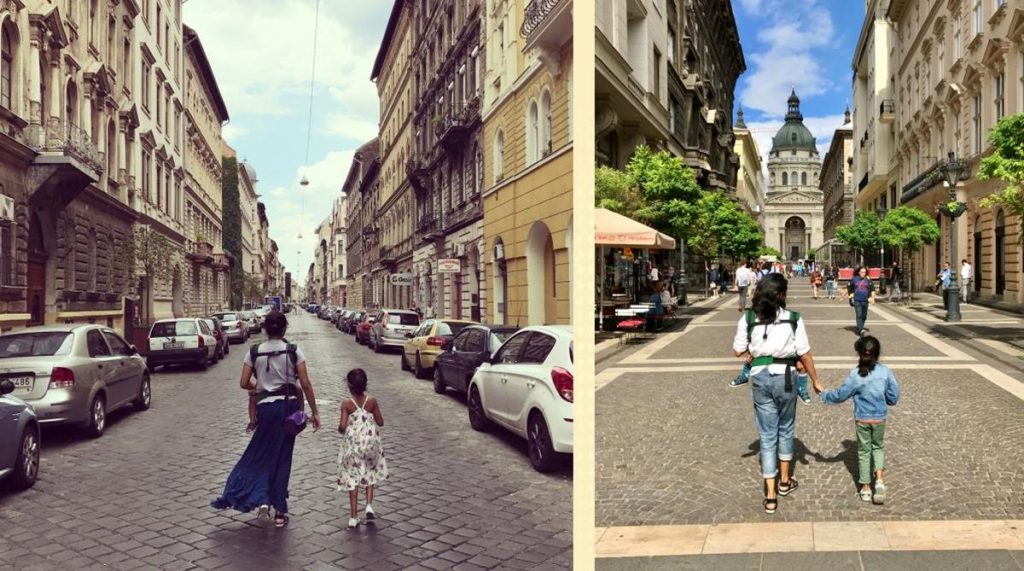
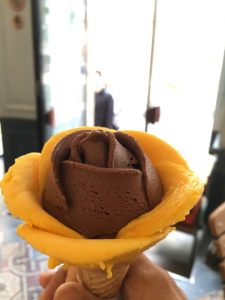
St. Stephen’s Basilica is one of the tallest buildings in Hungary and one of the largest churches in the country, as well. A fact that leads most tourists to start their tour of Budapest by doffing their hats at this Roman Catholic institution that is named after the first King of Hungary. It also said to house his “incorruptible” right hand. All these facts while intriguing to my husband and I mean naught to my toddler son and five-year old daughter who are instantly drawn by what is said to be an experience that one must not miss while in Budapest. And that was the eating of Gelato ice cream delicately shaped into a rose made of multiple flavours of one’s choice. Making the quick decision to visit the Basilica in detail another day, we swiftly make our way to Gelarto Rosa and pick our flavours from the artisanal ice cream on display. Within seconds the artists behind the counter shapes our chosen scoops into intricate roses that look too beautiful to be eaten. But eat them we did, as the Basilica’s bells peeled loudly announcing a newly-married couple, and tourists from all across the world made a beeline to the base of the stairs to immediately Instagram what looked like a fairytale wedding in a city that could definitely serve as backdrop for a romantic rendezvous or two.
And that is something that Indian filmmakers realized quite a few years ago. Everyone who knows Shah Rukh Khan (which is mostly everyone anyway) saw Budapest in a starring role in his movie with Anushka Sharma, ‘When Harry Met Sejal’. But how many of you know that Budapest has been a part of our cinematic universe right from the 1990s? Albeit disguised as another European city. As a former Bollywood trivia addict, this is why I found myself walking down the Szhechenyi Chain bridge, humming the title track to ‘Hum Dil De Chuke Sanam’ under my breath. For this is where Aishwarya Rai ran back to Ajay Devgan, leaving a heartbroken Salman Khan in her wake. While that part of the movie was said to be happening in Italy, it turned out that Hungary made a far more economical choice for the film’s budget and it was definitely a feast for the eyes, as well.
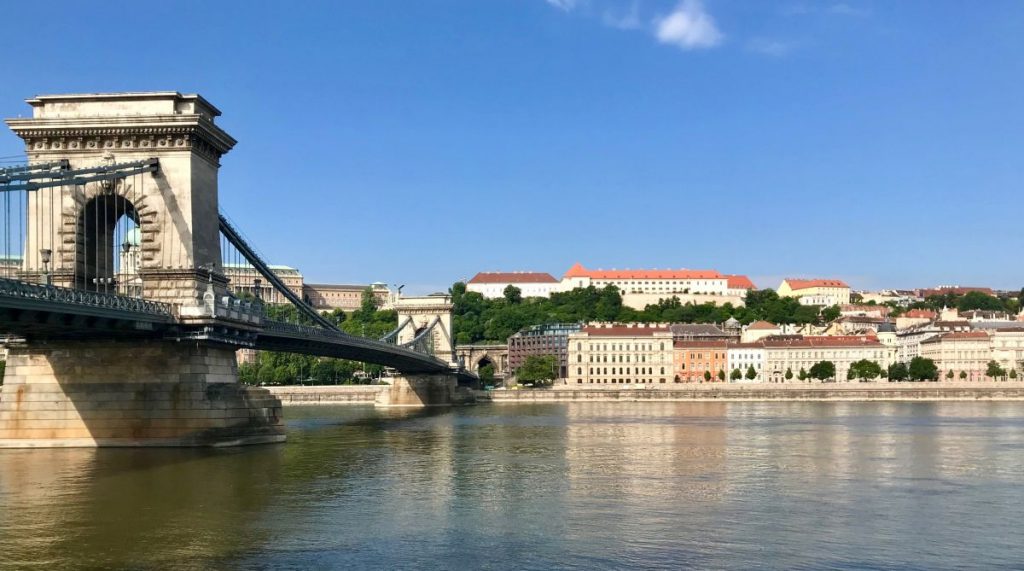
Budapest has a way of being larger than in life. Nowhere is this more exemplified than at Heroes Square, the largest town square in Budapest. Here massive statues of Hungarian leaders and the chieftains of various Magyar or the first tribes of Hungary glower down at visitors both local and foreign, as the more athletically inclined attempt to climb on to the top of the various imposing structures there. Right behind this is the humbly named City Park, which in no way reflects that it houses vast green spaces, ruins and renovated parts of a castle, a lake, an ancient thermal bath (that is still functioning), ducks, streams and so much more. Unlike most European cities, Budapest is a city that one needs to coax gems out of. It is a city that is reticent to talk about itself much like its residents. We ask them what there is to see around here and they merely gesture expansively with their hands and tilt their heads. ‘Cant you figure out for yourself?’ they seem to be asking.
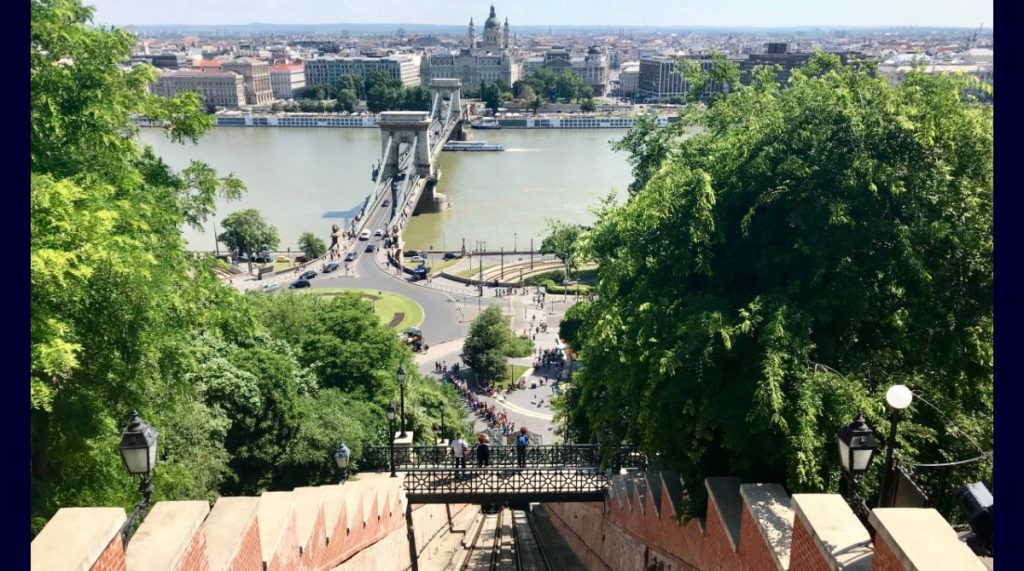
One part of the city that everyone is happy to point visitors toward is the Castle District. We make a beeline to the area one sunny Saturday and obediently fall in line to buy tickets for the Funicular up the hill. Originally built in 1870, this quaint form of transportation feels like a small, boxy train carriage was crossbred with a chair lift. We choose to buy a one-way ticket. As our car dramatically thuds the short way up, we strain our necks and lift our phones high to get the perfect shot of the Szhechenyi Bridge just before we reach Buda Castle.
Up on Castle Hill, the crowd prefers to stay outside in the open grounds that offer fantastic views of the Pest side, rather than wander inside the commanding walls of the Royal Palace. Once home to the kings and queens of Hungary, the castle now shelters the Hungarian National Gallery and the Budapest History Museum. Both respected museums in their own right that are often graced with the presence of prestigious travelling exhibits. As I write this, there is a special exhibit of the works of famed artist Frida Kahlo at the Hungarian National Gallery. But back to that sunny day, when we trailed off and away from the castle and found ourselves walking past old residences frozen in time, by choice and by law. Tiled roofs, cherubs coyly posing on the faces of edifices, complex metal locks and forbidding gates lined the street that took us all the way to the ruins of the tower of Mary Magdalene.
READ | Brussels: Regally diverse
Thanking the smiling attendant at the ticket counter, we slipped in through an unmarked arch cut in stone at the right side, just within the entrance. A narrow passage with steep stairs curved its way all the way to the top. After every few flights it opened up to larger rooms where signs printed in English and Hungarian told us the history of the church that was in many ways the history of Hungary, as well. Built in the 13th century, the church that this tower was a part of soon became the only functioning Christian church when the Ottoman Empire held sway over the land. In the 16th century, it was converted into a mosque and later on back to a church where the coronation of King Franz I was held. It took hits, many of them, during both of the World Wars but whatever was left standing was almost completely destroyed during the targeted cultural destruction of the Communist Era. All that remains is this tower.
Gingerly picking our way down, we walk down the winding road back in the direction of the castle, taking a left by Mathias Church of the imposing spires. Right in front of the medieval church is Fisherman’s Bastion – a fairytale looking watchtower complex that gives you a panoramic view of the river and the city – the perfect place to rest your legs and catch your breath and soak it all in. Land up there at sunset and it is easy to imagine that you have fallen through a time warp when architecture was meant to make you gasp in awe and bow your heads humbly at the might and beauty of it all, when times were simpler but life was still complex, for when is it not?
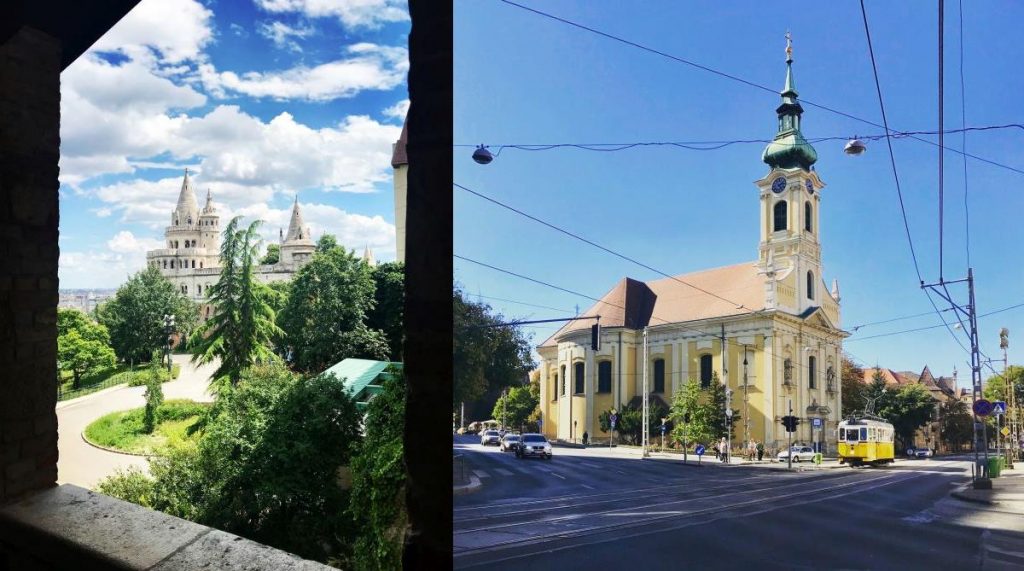
And then when the sun sets, Budapest truly comes alive. She shimmers and sparkles, confident of her beauty. Every carefully placed light on the buildings on the banks of the city and inward, are reflected back from the inky surface of the Danube that twinkles back at the city that has seen so much over the years. We are sitting in Tram Number 2 that is fast living up to its name of being one of the most picturesque tram rides in all of Europe. The tram track hugs the Pest side bank of the Danube, it passes by three sides of the majestic Hungarian Parliament building, the Castle, Gellert Hill and so many more sites that one feels hesitant to blink. What if we miss a sight or two?
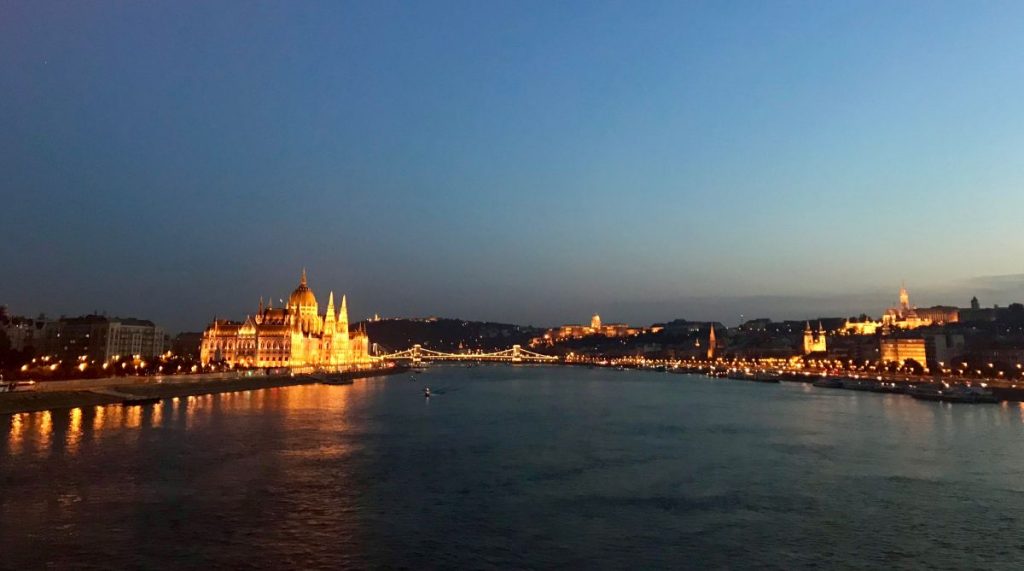
And it is late 2018, and we still feel that way. There is so much more to see and experience in Budapest. We find hidden alleys and cozy eateries and artsy bookshops. Parks and playgrounds galore that wink at our children who race to the slides and hang off the trees.
Budapest embraces us with its air of constant melancholy that coexists with a bohemian soul that expresses itself on peek-a-boo walls as murals and graffiti, breaking up the monotony. We try to return the embrace but find that as mere mortals it is hard to find our way around the true curves and limits of this beautiful city. But we continue to try.
(Shweta Ganesh Kumar is an award-winning Blogger, and Founder-Editor of The Times of Amma, a blog featuring real life stories on modern Indian parenting and inspirational Indian mothers. She has authored four books and her short fiction and poetry have been published in more than twenty anthologies and online literary magazines in more than four continents. Her travel columns have been featured in news outlets and travel publications across the world.)
Advertisement

